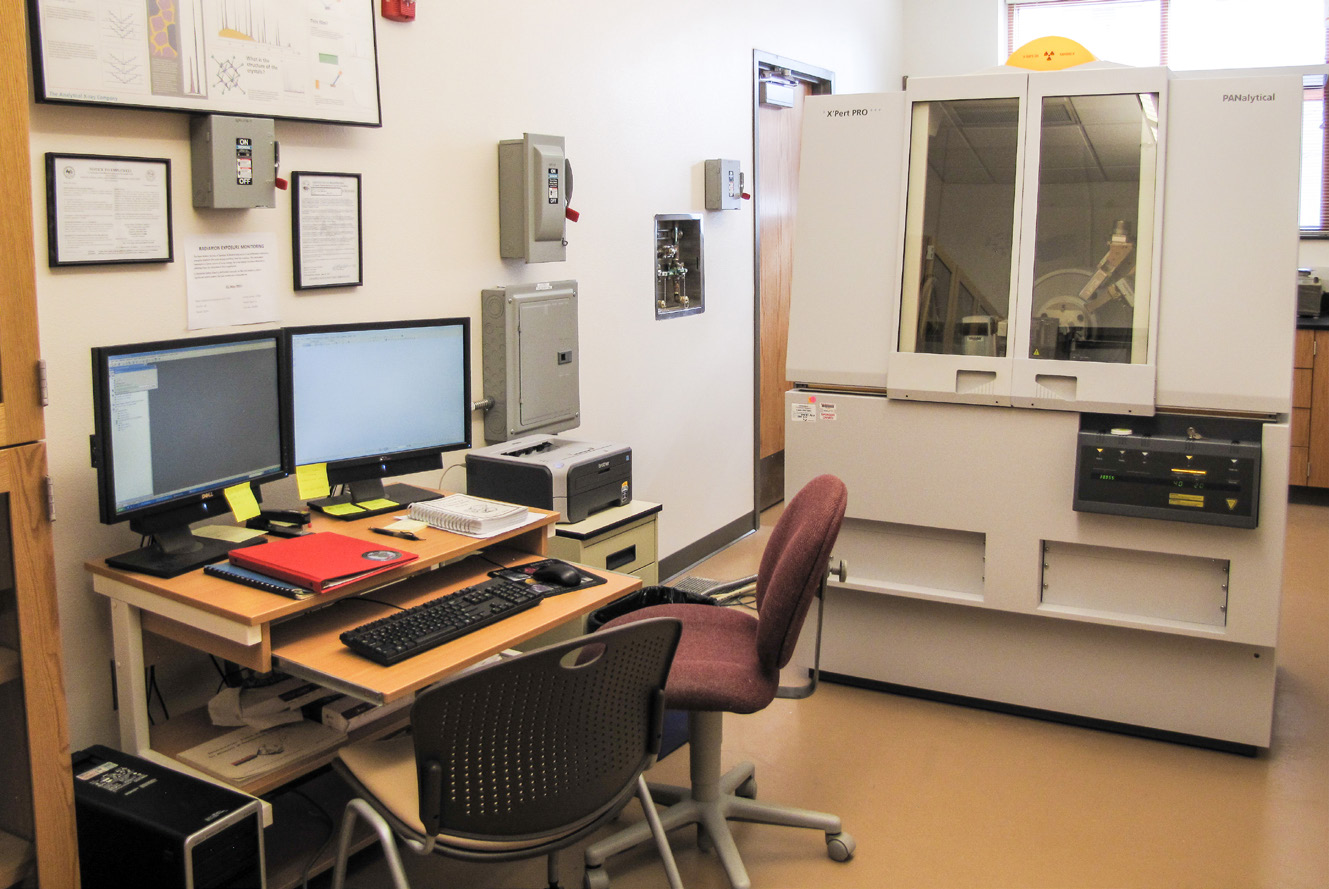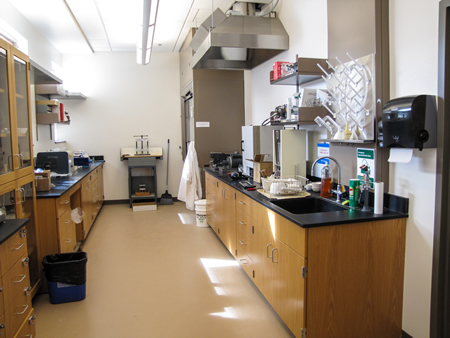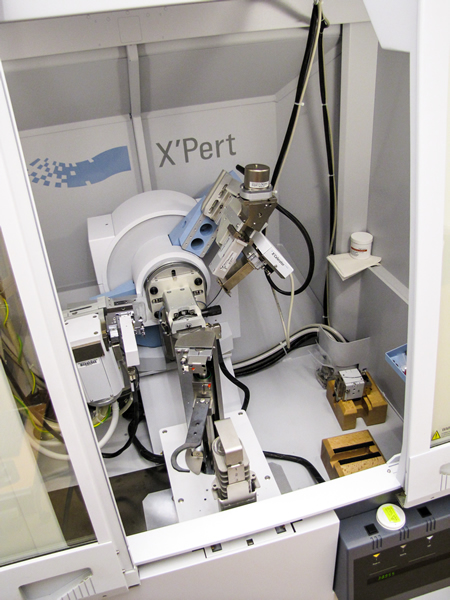
X-ray Facility


Our X-ray facility provides mineralogical and crystallographic analyses of solid materials by X-ray diffraction (XRD) in support of the research, educational, and public-service programs of the Bureau of Geology and New Mexico Tech. It also serves agencies and industries of New Mexico by providing analyses that cannot be obtained through commercial sources. The facility provides rapid qualitative analyses, please view our price list to see which analytical services we offer.
XRD is used to determine the crystalline composition and many crystalline properties of materials such as rocks and minerals, soils, metals, and ceramics. It is employed extensively for rapid identification of earth materials and crystalline phases in alloys, composites, and ceramics. Every crystalline substance has a unique X-ray diffraction pattern. When coupled with chemical data (like that from an electron microprobe analysis) a material can be rigorously identified.
X-Ray diffraction (XRD) analysis utilizes monochromatic X-ray energy to determine the arrangement atomic layers in crystalline substances. X-rays were discovered in 1895 but not understood until 1912 when they were first used on minerals. The wavelengths of X-ray radiation are near 1 angstrom, similar to the distances of bond lengths of atoms in crystals. The interaction of the X-rays with the geometry of crystallographic planes is what produces the characteristic X-ray diffraction patterns we use to identify minerals, measure crystallite sizes, determine thicknesses of atomic layers, recognize deformation of crystals, and other phenomena.



The Panalytical X’Pert Pro XRD unit in the Bureau of Geology was acquired through a grant from the Department of Education. The machine is used for class instruction as well as research across a wide range of disciplines. Analysis is very rapid and requires very little sample preparation other than some grinding to make it a powder. The amount of material needed can be very small, about the size of a grain of salt.
Each year a class is offered through the NMT Earth & Environmental Science Department to teach students about X-ray diffraction analysis, including the subjects of: X-ray generation & properties, crystallography, diffraction, and data interpretation. Many professors and graduate students across a number of disciplines conduct research in this lab. We estimate that 75% of the hands-on use of the equipment is by graduate and undergraduate students of New Mexico Tech.
For information regarding the analytical services we offer, view our price list.
For more information about X-ray diffraction, please contact:
- John Rakovan — Mineralogist & XRD Laboratory Director
- Kelsey McNamara — Mineral Museum Curator, XRD Laboratory Manager


